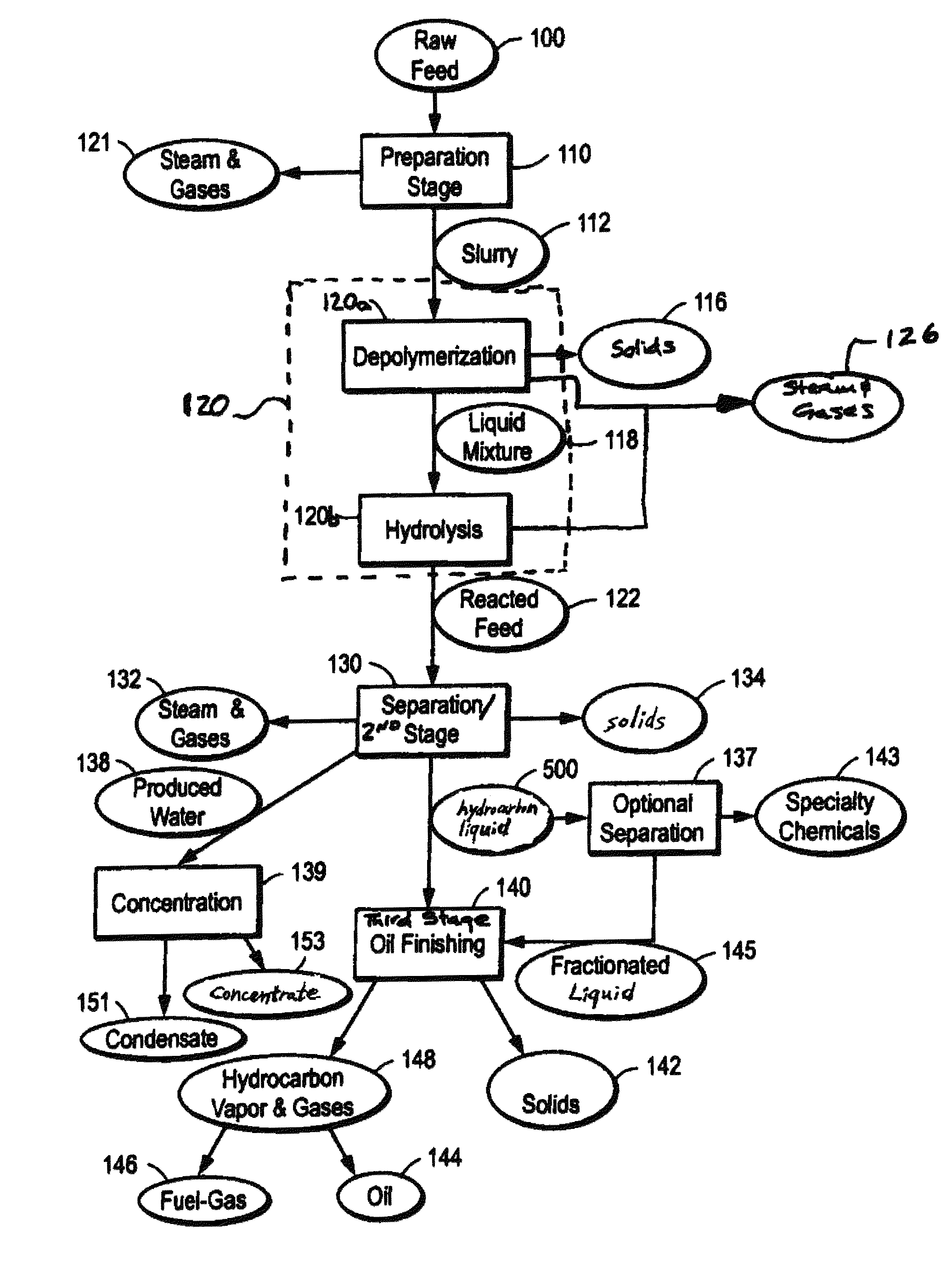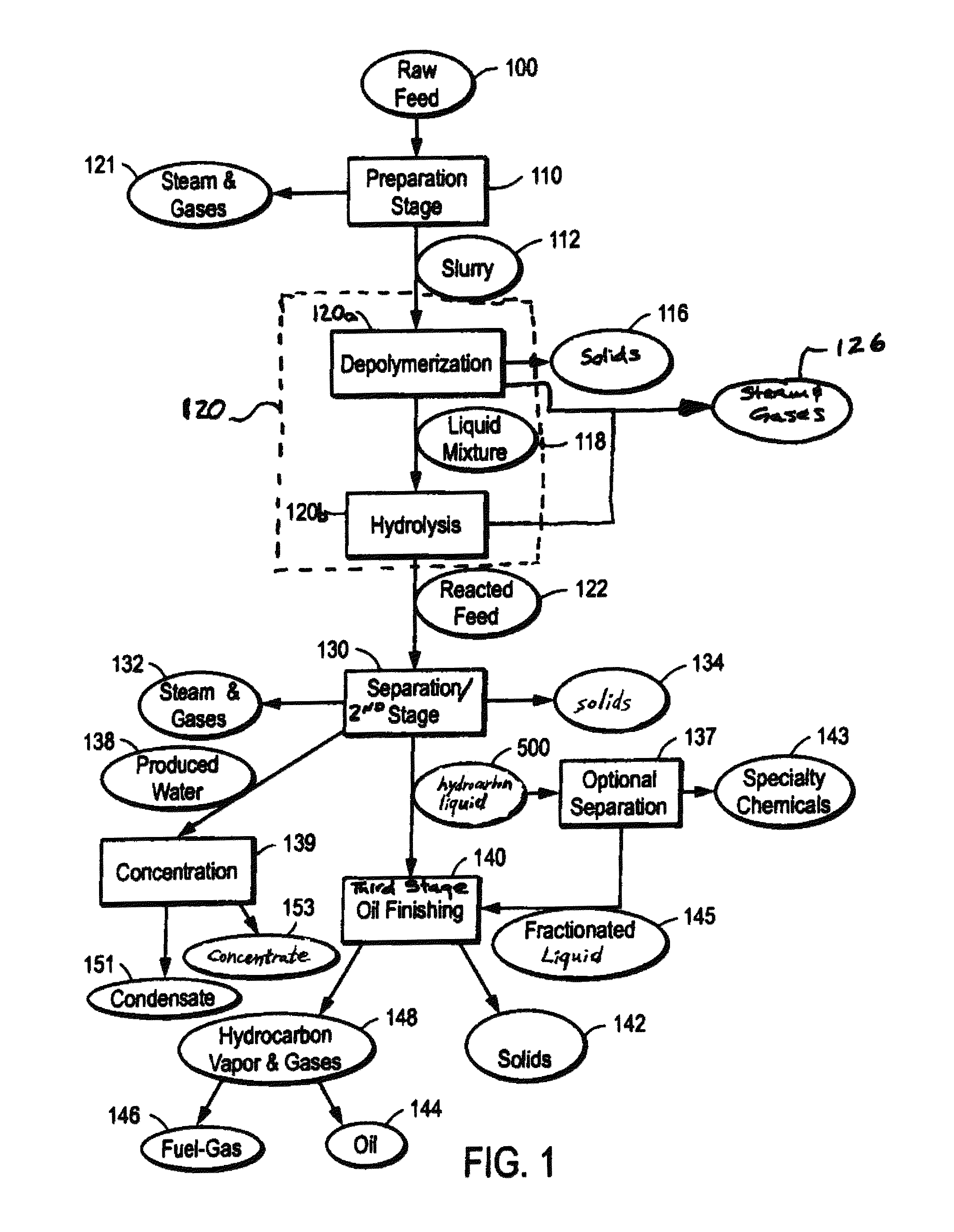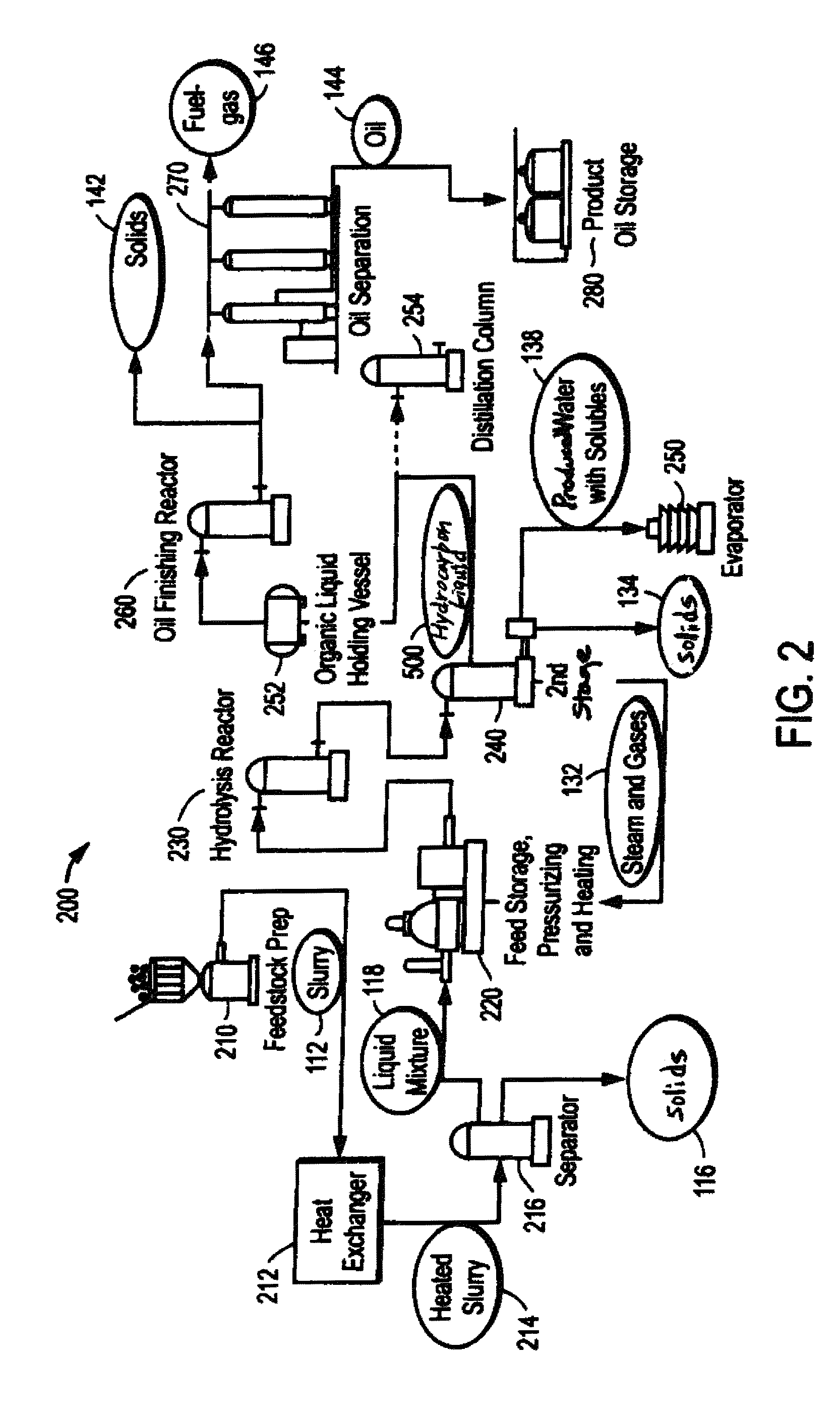Methods and apparatus for converting waste materials into fuels and other useful products
a technology of waste materials and fuels, applied in the directions of transportation and packaging, separation processes, filtration separation, etc., can solve the problems of poor energy efficiency, little control, if any, over the composition of products, and energy-intensive processes
- Summary
- Abstract
- Description
- Claims
- Application Information
AI Technical Summary
Benefits of technology
Problems solved by technology
Method used
Image
Examples
example 1
Operating Plant—Agricultural Waste
[0161]A full-sized, commercial-scale installation has been constructed with a system as illustrated in FIGS. 6 and 7 for processing of turkey offal and other animal-based agricultural waste. At peak capacity, the plant is designed to yield over 500 barrels of oil per day, based on an average raw feed input of approximately 250 tons. Approximately 40 to 50 barrels of oil per day may be returned to the system to generate heat for powering the system. The oil produced is a high-quality oil of a similar environmental grade as a #2 heating oil. The plant produces about 28,000 gallons of water per day from the feedstock itself. The plant also discharges cooling tower blowdown, boiler blowdown, domestic wastewater, scrubber blowdown and other non-contact cooling water, which is clean enough to discharge into a municipal sewage system and which is free of pathological vectors. The plant also produces about 20 tons of minerals and about 30 tons of concentrat...
example 2
Pilot Plant—Shredder Residue Processing
[0183]A pilot plant also has been built employing apparatus and processes of the present invention. As shown in FIG. 8, raw feed (typically SR, but the illustrated process also generally applies to MSW, which can be similar in composition, and other mixed plastic / rubber feeds) is received from the source, such a recycler, already ground in suitable size particles for processing (generally about ½″ to about 6″ across). Therefore very little feedstock preparation is generally required. It may be desirable to mix the raw feed with a liquid input 2003 to facilitate flowability of the raw feed and assist in reactions and heat transfer during subsequent processing. Persons of ordinary skill in the art may select suitable liquid inputs 2003 based on specific composition of particular raw feeds. For example, for SR as described herein, suitable liquid inputs include high molecular weight waste or virgin liquids such as used automotive fluids, crude oil...
example 2a
Thermal Cracking And Distillation of SR Hydrolyzed Oil
[0205]Approximately 10 liters of hydrocarbon liquid from the SR Example above was thermally cracked in a bench-scale reactor at temperatures near approximately 500° C. (930° F.) in six runs to produce a refined hydrocarbon oil, a fuel-gas, and a solid carbon product. A photo-graph of the bench-scale thermal cracking unit is shown in FIG. 10. Gas and oil vapor were vented during the reaction in order to maintain a target pressure. The run was terminated when gas evolution stopped, as indicated by a constant gas pressure. The distribution of oils / gas / carbon fractions from the thermal cracker was about 84%, 10%, and 6%, respectively.
[0206]One cracked oil product is a renewable diesel similar to conventional diesel fuel. This cracked oil can be used for a variety of purposes, e.g. as a direct replacement for diesel fuel or as a blending component for diesel fuel. The chemical and physical characteristics of the cracked oil are listed...
PUM
| Property | Measurement | Unit |
|---|---|---|
| pressures | aaaaa | aaaaa |
| temperatures | aaaaa | aaaaa |
| pressures | aaaaa | aaaaa |
Abstract
Description
Claims
Application Information
 Login to View More
Login to View More - R&D
- Intellectual Property
- Life Sciences
- Materials
- Tech Scout
- Unparalleled Data Quality
- Higher Quality Content
- 60% Fewer Hallucinations
Browse by: Latest US Patents, China's latest patents, Technical Efficacy Thesaurus, Application Domain, Technology Topic, Popular Technical Reports.
© 2025 PatSnap. All rights reserved.Legal|Privacy policy|Modern Slavery Act Transparency Statement|Sitemap|About US| Contact US: help@patsnap.com



